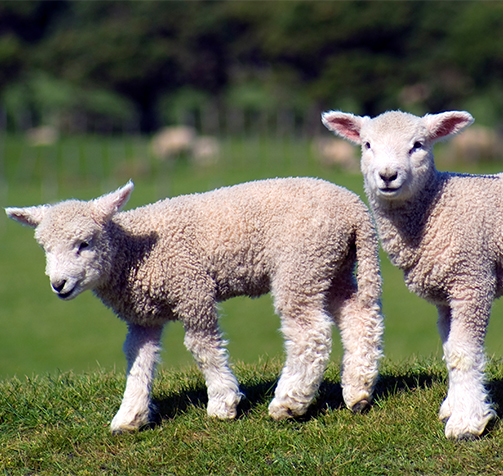Lamb Rearing 101
Words by Tiffany Menzies
Undoubtedly, one of the joys of spring is seeing healthy well-fed lambs at play. Other signs of a healthy lamb are that they have a good appetite, move freely without pain or discomfort, are bright-eyed and alert with ears up and are interactive with their world.
Growth in the New Zealand sheep milking flock, allied to a commitment to give surplus ram lambs a meaningful life, is leading to increases in the number of lambs available for hand rearing. This has to be good news in terms of lamb production in the face of a falling total national sheep flock. Rather than accidental orphans, lambs from milking sheep typically spend longer with mum to ensure good colostrum intake and may even share milk with the milking plant for a time. Increased value of surplus lambs from the commercial meat flock means opportunities for both commercial farmers and lifestylers who want to turn their expertise, land and buildings to lamb rearing.
Lessons from successful calf rearing can be applied to lamb rearing for both small-cale and commercial operations. Providing shelter or coats, especially to smaller lambs, can increase growth rates and reduce losses. Milk replacers normally offer savings over whole milk that can be sold – especially more valuable ewe’s milk. Ewe’s milk contains more fat than cow’s milk, so a milk replacer designed for lambs is preferable to cow’s milk. Coccistop® can be added to whole milk or milk replacer for the treatment and prevention of coccidiosis in lambs.
- Offer a hard feed during the first week of life. Putting some hard feed in their mouths after each milk feed can help to get them used to the taste and texture of hard feed. Intakes will be very small at first but will increase as lambs get older.
- Always go for a lamb-specific hard feed as it is better suited for lambs. Calf feed is often too high in copper for lambs and can cause toxicity.
- Keep feed troughs clean and don’t put lots of hard feed out and leave it to go mouldy and contaminated by vermin or birds. Putting out a small amount of fresh feed every day is best.
- Ensure there is enough room at hard feed troughs, so that all lambs have an equal chance.
- If housed, offer some long fibre such as hay or straw, but ensure that lambs do not overconsume it as this can decrease hard feed intake and growth rates.
- It is a good idea to keep a hard feed in over the weaning period and beyond to support lambs while on grass and continue coccidiosis protection.
- Make sure lambs have access to clean, reachable drinking water – milk from a teat should by pass the rumen but water from a trough is required to create a sloppy mix in the rumen.
NRM has a great range of tried and tested hard lamb feeds. They have a muesli-style starter feed, which is a molasses-based, highly palatable textured feed designed to start getting young lambs onto hard feed early in life, and then a pelleted lamb feed which is a good next stage hard feed for lambs as they get older.




